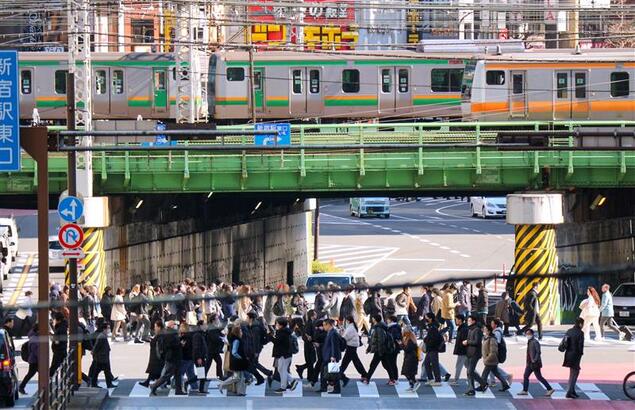TOKYO, Japan Wire – Japan’s urban commuters endured an increase in cramped rush-hour conditions on trains in 2024, with the most crowded train in Tokyo more than 70 percent over capacity, according to recent government data.
Morning rush hour on a section of the Nippori-Toneri Liner, in Tokyo’s Arakawa Ward, was found to have an average congestion rate of 177 percent, the highest in a survey covering congestion on Japan’s urban trains, conducted by the Ministry of Land, Infrastructure, Transport and Tourism.
Between 7:30 a.m. and 8.30 a.m. on a section of the driverless guideway transit system traveling from Akado-Shogakkomae Station to Nishi-Nippori Station, carriages with a capacity totaling 4,887 handled 8,664 passengers — 77 percent over capacity, according to the survey data published in July.
With a congestion rate of 163 percent, the second highest in Tokyo, Hibiya Line trains from Minowa Station to Iriya Station in Taito Ward were the most crowded for morning rush-hour passengers using the Tokyo Metro network.
JR Saikyo Line trains from Itabashi Station to Ikebukuro Station in Toshima Ward shared the same rate, making them the most crowded of the trains in Tokyo operated by East Japan Railway Co.
Passengers on trains with a congestion rate of around 150 percent will be able stand without touching shoulders but there will be some crowding near the doors, the survey report said.
At 180 percent, shoulders will be touching, and passengers may feel some pressure. Passengers near the doors will feel cramped.
The annual survey on urban train congestion highlighted conditions in Japan’s three major metropolitan areas — Tokyo, Osaka, and Nagoya. The ministry surveyed 31 sections of Tokyo’s railway network.

Trains pass through Tokyo’s Shinjuku Ward in January 2025. (Japan Wire)
Congestion rates were calculated based on morning rush-hour passenger numbers during one or more days between October and November in 2024.


AloJapan.com